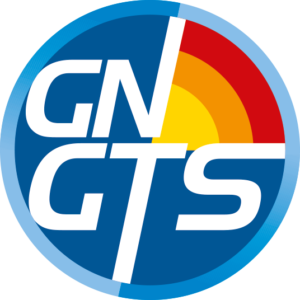SEISMICITY, VOLCANOES, DATA AND MODELS
Session 1.1
Recent advancements in earthquake, active fault, and seismogenic process studies
Convenors of the session:
Paolo Galli (DPC) – paolo.galli@protezionecivile.it
Alessandro Amato (INGV) – alessandro.amato@ingv.it
Maria Eliana Poli (UniUd) – eliana.poli@uniud.it
Angela Saraò (OGS) – asarao@ogs.it
Fifty years after the destructive 1976 Friuli seismic sequence (Mw 6.5), what are the advances in the fields of earthquakes and active tectonics, according to observations, multidisciplinary data, and modeling of both natural and experimental faults? We invite contributions on the following topics:
- Field and remote investigations of active faults and – their structural and Quaternary background.
- Paleoseismology and Archaeoseismology as tools for expanding seismic catalogues.
- Investigation and classification of active, capable faults for MS studies, in both tectonic and volcanic settings.
- Historical seismicity and Macroseismic studies.
- Case studies of past and recent major earthquakes.
- Analysis of natural and induced seismicity patterns.
- Advanced Approaches and AI-Based Algorithms for Seismic Investigation, for both research and monitoring purposes.
- Seismic source studies through seismic, geodetic and/or other multidisciplinary datasets.
- GPS and InSAR data for the evaluation of inter-, post- and co-seismic deformation.
- Multidisciplinary and multiscale geophysical imaging for seismotectonic studies.
- Insights into the mechanics of earthquakes and faulting from numerical modeling and laboratory experiments.
- Rheological properties of rocks and the influence of fluids in the process of seismogenesis: from laboratory experiments to the Earth’s crust.
****
Session 1.2
The role of geofluids in earthquakes, volcanoes and geothermal fields
Convenors of the session:
Mimmo Palano (UniPa) – mimmo.palano@unipa.it
Cristina Totaro (UniMe) – cristina.totaro@unime.it
Francesca Di Luccio (INGV Roma1) Francesca.diluccio@ingv.it
Geofluids (particularly water, sulphur and carbon dioxide), play a pivotal role in a variety of geological processes on our planet. For example, fluid overpressure along faults is considered a primary mechanism facilitating earthquake slip. At active volcanoes, fluids govern magma accumulation in the crust, magma ascent and ultimately eruptive style. In geothermal systems, fluids transport heat and rare elements from the Earth’s interior to the surface, serving as a renewable energy source and generating mineral ores.
This session aims at bringing together contributions that explore the critical role of fluids in driving Earth’s tectonics and in controlling volcanic and geothermal systems. The goal is to present and discuss recent advances on earthquake-related hydrologic and geochemical observed temporal changes, diffuse degassing in active tectonic, geothermal and volcanic settings. We encourage the submission of contributions on the following topics:
- Geophysical imaging
- Geochemical data and observations
- Sub-crustal and deep hydrology
- Fluid-fault interaction and slip
- Rocks rheology and fluids
- Petrological investigations
- Field observations
- Remote sensing observation
- Geodetic data
- Hyperspectral imaging
- Volcano monitoring
- Effusive/explosive activity
- Models and inversion techniques
- Hazard assessment
****
Session 1.3
Physical models for the Solid Earth and integration between modeling and data of different nature
Convenors of the session:
Carla Braitenberg (UniTS) – berg@units.it
Anna Maria Marotta (UniMl) – anna.maria.marotta@unimi.it
Barbara Orecchio (UniME) – barbara.orecchio@unime.it
This session welcomes contributions in which the processes involving the Earth’s crust, mantle and core, including those involving interactions between the Solid part and other compartments of the Earth, such as the Hydrosphere and the Atmosphere, are studied with a strongly physical approach, also integrated with data of different nature for a better understanding of the phenomena under examination.
Contributions on the following topics are encouraged:
- Forward and inverse physical models of Solid Earth processes at different wavelengths and time scales
- Surface tectonic deformation
- Post glacial rebound
- Mantle dynamics
- Relative Sea level change
- Earthquakes and the internal structure of the Earth
- Techniques and quantitative methods for analyzing large amounts of geophysical data of different nature and at very high resolution, both terrestrial and satellite (eg. GNSS, SAR, Gravitational, Seismological, Magnetometric, thermal)
- Rheological characterization of the crust and mantle
- Numerical models of geomagnetic anomalies
- Shape and size of the Earth
- Earth’s gravitational field
- Numerical modeling of Gravimetric Anomalies
- Observation of the Earth from Space – GNSS, InSAR
- Surface geodetic deformation
- Integrated analyses between physical modeling and data (natural, experimental and observational from satellite)
- Interactions between Solid Earth processes and the Hydrosphere and the Atmosphere


